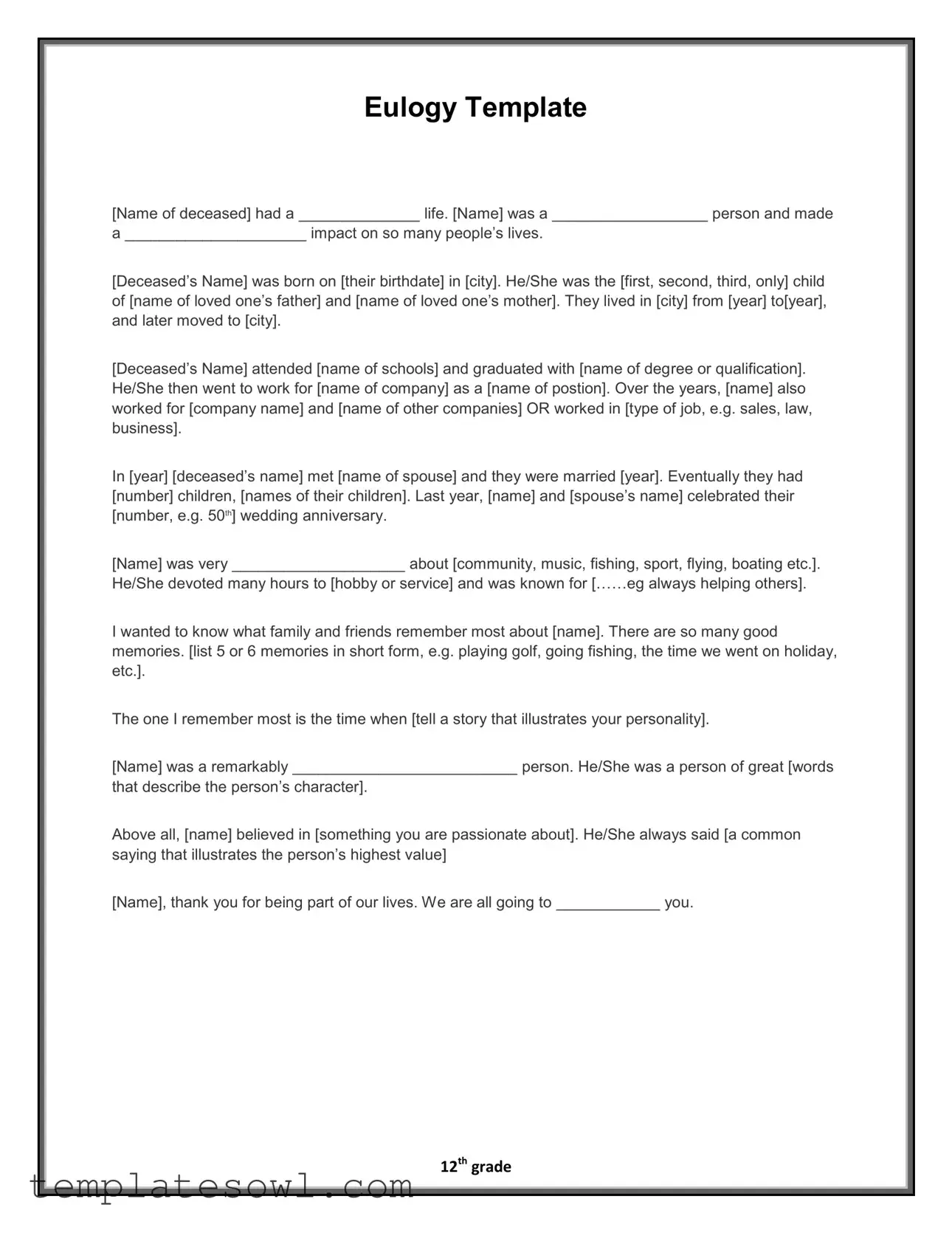Eulogy Template
[Name of deceased] had a ______________ life. [Name] was a __________________ person and made
a _____________________ impact on so many people’s lives.
[Deceased’s Name] was born on [their birthdate] in [city]. He/She was the [first, second, third, only] child of [name of loved one’s father] and [name of loved one’s mother]. They lived in [city] from [year] to[year],
and later moved to [city].
[Deceased’s Name] attended [name of schools] and graduated with [name of degree or qualification]. He/She then went to work for [name of company] as a [name of postion]. Over the years, [name] also worked for [company name] and [name of other companies] OR worked in [type of job, e.g. sales, law, business].
In [year] [deceased’s name] met [name of spouse] and they were married [year]. Eventually they had
[number] children, [names of their children]. Last year, [name] and [spouse’s name] celebrated their
[number, e.g. 50th] wedding anniversary.
[Name] was very ____________________ about [community, music, fishing, sport, flying, boating etc.].
He/She devoted many hours to [hobby or service] and was known for [……eg always helping others].
I wanted to know what family and friends remember most about [name]. There are so many good memories. [list 5 or 6 memories in short form, e.g. playing golf, going fishing, the time we went on holiday, etc.].
The one I remember most is the time when [tell a story that illustrates your personality].
[Name] was a remarkably __________________________ person. He/She was a person of great [words
that describe the person’s character].
Above all, [name] believed in [something you are passionate about]. He/She always said [a common saying that illustrates the person’s highest value]
[Name], thank you for being part of our lives. We are all going to ____________ you.

